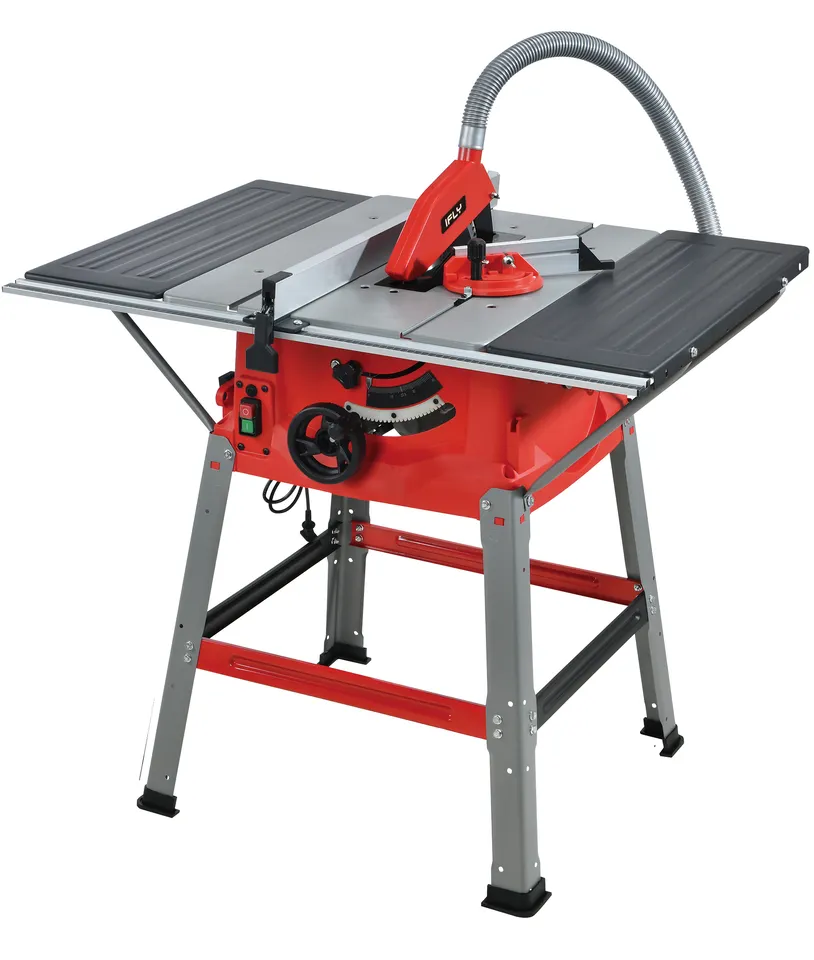Electric saws are power tools that use electricity to cut through different materials, such as wood, metal, plastic, and concrete. They come in various shapes and sizes, depending on the type of cutting task they are designed for. In this article, we will explore the different types of electric saws and their uses, as well as some tips on how to choose the best one for your project.
Electric saws are versatile power tools designed for cutting various materials, including wood, metal, plastic, and more. They utilize an electric motor to power the cutting blade, providing precise and efficient cutting capabilities. Each type of electric saw is specifically designed for different cutting tasks, offering unique features and benefits.
Table of Contents
ToggleWhat is an Electric Saw?
An electric saw is a device that uses a rotating or reciprocating blade to cut through materials. The blade is powered by an electric motor, which can be corded or cordless. Electric saws are faster, easier, and more accurate than manual saws, making them ideal for DIY enthusiasts and professionals alike.
Benefits of Using Electric Saws
Electric saws have many advantages over manual saws, such as:
- They can cut through various materials with ease and precision.
- They can make straight, curved, angled, or beveled cuts, depending on the type of blade and saw.
- They can save time and energy by reducing the physical effort required to cut.
- They can reduce the risk of injury by minimizing the contact between the user and the blade.
- They can offer more control and comfort by having ergonomic handles and features.
Types of Electric Saws and Their Uses
There are many types of electric saws available in the market, each with its own purpose and function. Here are some of the most common ones and their uses:

Circular Saw
A circular saw is a handheld electric saw that uses a circular blade to make straight cuts across materials. It is one of the most versatile and widely used electric saws, as it can cut through wood, metal, plastic, and concrete. It is also easy to use and adjust, as it has a base plate that guides the blade along the cutting line.
Some of the uses of a circular saw are:
- Cutting plywood, boards, planks, and panels.
- Cutting framing lumber, studs, joists, and beams.
- Cutting metal pipes, rods, bars, and sheets.
- Cutting concrete blocks, bricks, pavers, and tiles.
Jigsaw
A jigsaw is a handheld electric saw that uses a narrow blade to make curved or intricate cuts in materials. It is one of the most flexible and creative electric saws, as it can cut along any shape or pattern. It is also easy to maneuver and control, as it has a variable speed trigger and a pendulum action that moves the blade up and down.
Some of the uses of a jigsaw are:
- Cutting curves, circles, arcs, and angles in wood, metal, plastic, and laminate.
- Cutting holes, notches, slots, and openings in materials.
- Cutting decorative patterns, designs, and shapes in materials.
- Cutting scrollwork, fretwork, inlays, and marquetry in wood.
Reciprocating Saw
A reciprocating saw is a handheld electric saw that uses a long blade to make back-and-forth cuts in materials. It is one of the most powerful and aggressive electric saws, as it can cut through almost anything with ease. It is also easy to operate and change blades, as it has a trigger switch and a quick-release mechanism.
Some of the uses of a reciprocating saw are:
- Cutting branches, logs, firewood, and tree roots.
- Cutting PVC pipes, copper pipes, steel pipes, and cast iron pipes.
- Cutting nails, screws, bolts, hinges, and hardware.
- Cutting drywall, plasterboard,
- Cutting demolition and renovation debris, such as wood, metal, and concrete.

Miter Saw
A miter saw is a stationary electric saw that uses a circular blade to make angled cuts in materials. It is one of the most precise and accurate electric saws, as it can cut at various angles and degrees. It is also easy to set up and use, as it has a base that supports the material and a fence that aligns the blade.
Some of the uses of a miter saw are:
- Cutting molding, trim, casing, and baseboard.
- Cutting crown molding, chair rail, and picture frame.
- Cutting crosscuts, miter cuts, bevel cuts, and compound cuts in wood, metal, plastic, and laminate.
- Cutting rafters, trusses, and roof framing.

Table Saw
A table saw is a stationary electric saw that uses a circular blade to make straight or angled cuts in materials. It is one of the most versatile and efficient electric saws, as it can cut large and thick materials with ease. It is also easy to adjust and customize, as it has a table that supports the material and a fence that guides the blade.
Some of the uses of a table saw are:
- Cutting plywood, boards, planks, and panels.
- Cutting framing lumber, studs, joists, and beams.
- Cutting dadoes, grooves, rabbets, and tenons in wood.
- Cutting joinery, such as dovetails, box joints, and mortise-and-tenon joints.
How to Choose the Best Electric Saw for Your Project
Choosing the best electric saw for your project depends on several factors, such as:
- The type of material you want to cut.
- The size and thickness of the material you want to cut.
- The shape and pattern of the cut you want to make.
- The level of precision and accuracy you need.
- The amount of time and effort you want to spend.
To help you choose the best electric saw for your project, here are some questions you can ask yourself:
- Do I need a handheld or a stationary electric saw?
- Do I need a corded or a cordless electric saw?
- Do I need a circular or a reciprocating blade?
- Do I need a variable or a fixed-speed electric saw?
- Do I need a single or a dual-bevel electric saw?
- Do I need any additional features or accessories for my electric saw?
By answering these questions, you can narrow down your options and find the best electric saw for your project.
Conclusion
Electric saws are essential tools for any cutting project. They can help you cut through various materials with speed, ease, and precision. They can also help you create different shapes and patterns with creativity and flexibility. However, not all electric saws are the same. They have different types, functions, and features that suit different purposes and preferences. Therefore, it is important to know the different types of electric saws and their uses before buying one. By doing so, you can ensure that you get the best electric saw for your project.
Electric saws are indispensable tools for woodworking, construction, and other cutting tasks. By understanding the different types of electric saws and their specific uses, you can select the right tool for your projects. Whether you need to make straight cuts, intricate curves, or heavy-duty demolition, there’s an electric saw designed to meet your requirements.
So, explore the various types of electric saws available, consider the nature of your projects, and invest in the right tool that will enhance your cutting efficiency and precision.
FAQs
Here are some frequently asked questions about electric saws and their answers:
Q: What is the difference between a circular saw and a jigsaw?
A: A circular saw uses a circular blade to make straight cuts across materials. A jigsaw uses a narrow blade to make curved or intricate cuts in materials.
Q: What is the difference between a reciprocating saw and a miter saw?
A: A reciprocating saw uses a long blade to make back-and-forth cuts in materials. A miter saw uses a circular blade to make angled cuts in materials.
Q: What is the difference between a table saw and a band saw?
A: A table saw uses a circular blade to make straight or angled cuts in materials. A band saw uses a continuous loop of the blade to make curved or irregular cuts in materials.
Q: How do I change the blade on my electric saw?
A: The exact procedure may vary depending on the model of your electric saw. However,
Q: What safety precautions should I take when using electric saws?
- When using electric saws, always wear appropriate safety gear, such as goggles and gloves.
- Ensure the work area is well-lit and free from clutter.
- Keep your hands away from the cutting blade and use push sticks or guides when necessary.
Read and follow the manufacturer’s instructions and safety guidelines.
Q: Are electric saws suitable for beginners?
- Yes, many electric saws are beginner-friendly and come with safety features and user-friendly controls. However, it’s essential to familiarize yourself with the tool’s operation and follow proper safety procedures.
Q: Can I use an electric saw for precision cutting?
- Yes, certain electric saws, such as miter saws and scroll saws, are designed for precise and intricate cuts. These tools offer adjustable settings and features that enable accuracy and control.
Q: How do I maintain and care for my electric saw?
- Regularly clean the saw and remove any sawdust or debris that may affect its performance.
- Keep the blade sharp and replace it when necessary.
- Follow the manufacturer’s maintenance instructions and lubricate the necessary parts.





